News
News Archive
- ‘Amid the Hills of Redesdale’ community radio play released!
- A Fantastic Year for Redesdale!
- Archaeological Excavation report produced for Bellshiel
- Archaeological Excavation report produced for Yatesfield enclosed settlement
- Archaeological Survey Report Published For Ancient Settlement At Rattenraw
My Revitalising Redesdale Blog: The wonderful world of peat!
June 4, 2021
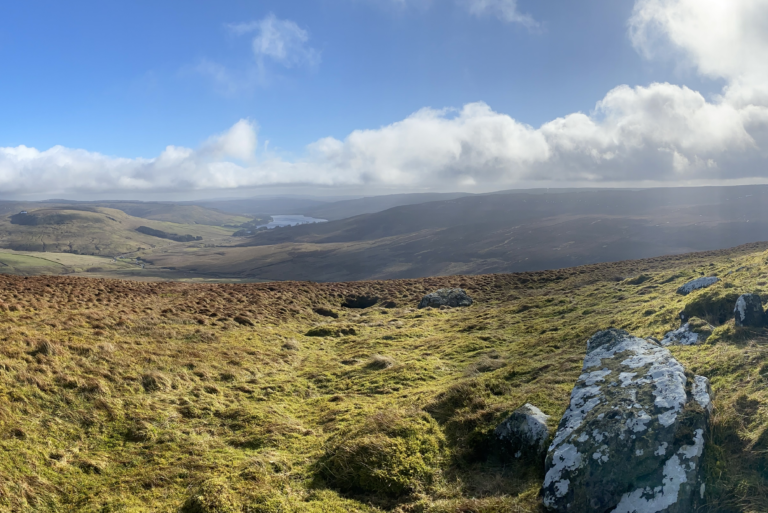
Revitalising Redesdale’s Assistant Project Officer Natasha highlights the importance of peat and gives an insight into peat restoration work happening within the valley.
It won’t come as a surprise to most of us that peat is important for our planet, to store huge amounts of carbon – peat bogs must be kept in good condition or we face losing these carbon sponges, contributing to further global warming. National campaigns to stop the extraction of peat for compost is a real hot topic at the moment, so please do your bit and go peat-free in your garden!
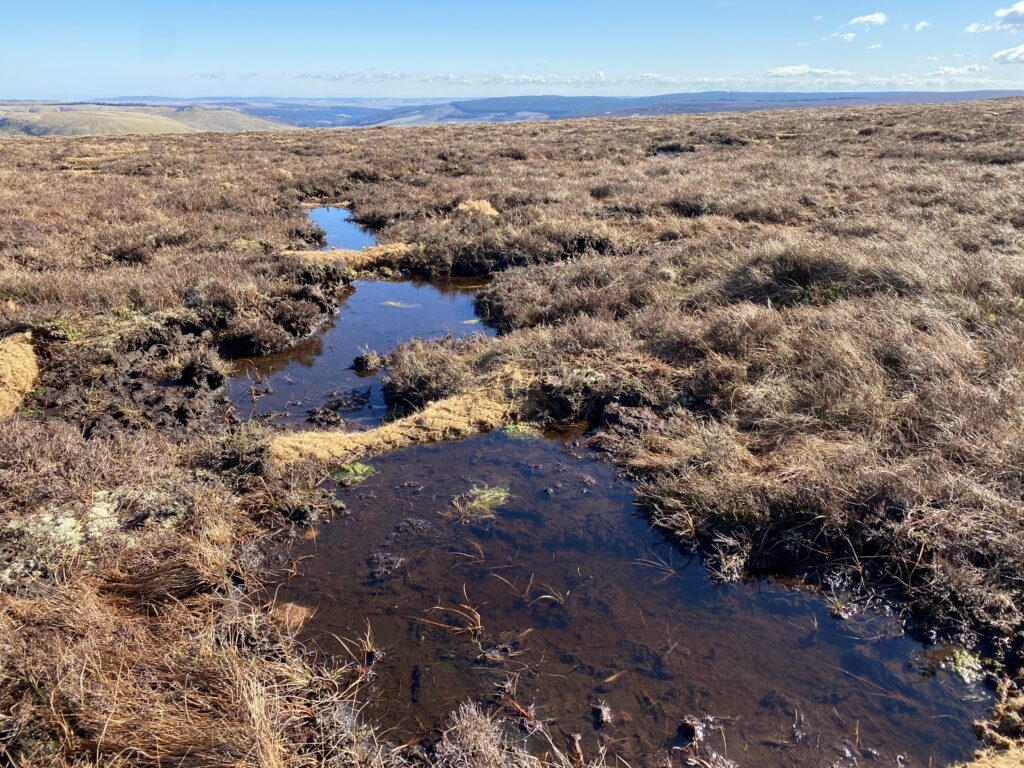
Our peat bogs are also hugely important for wildlife, from the carpets of sphagnum mosses to cotton grasses, and bog specialists like sundews, cloudberry and bog asphodel. These plant species support a vast range of birds, butterflies and reptiles. At Whitelee Moor NNR in Redesdale, the heather moorland supports merlin, buzzard, hen harrier, skylark and meadow pipit, as well as providing breeding ground for dunlin and golden plover. The latter I have had the pleasure of watching from afar while they find the best place for nesting.
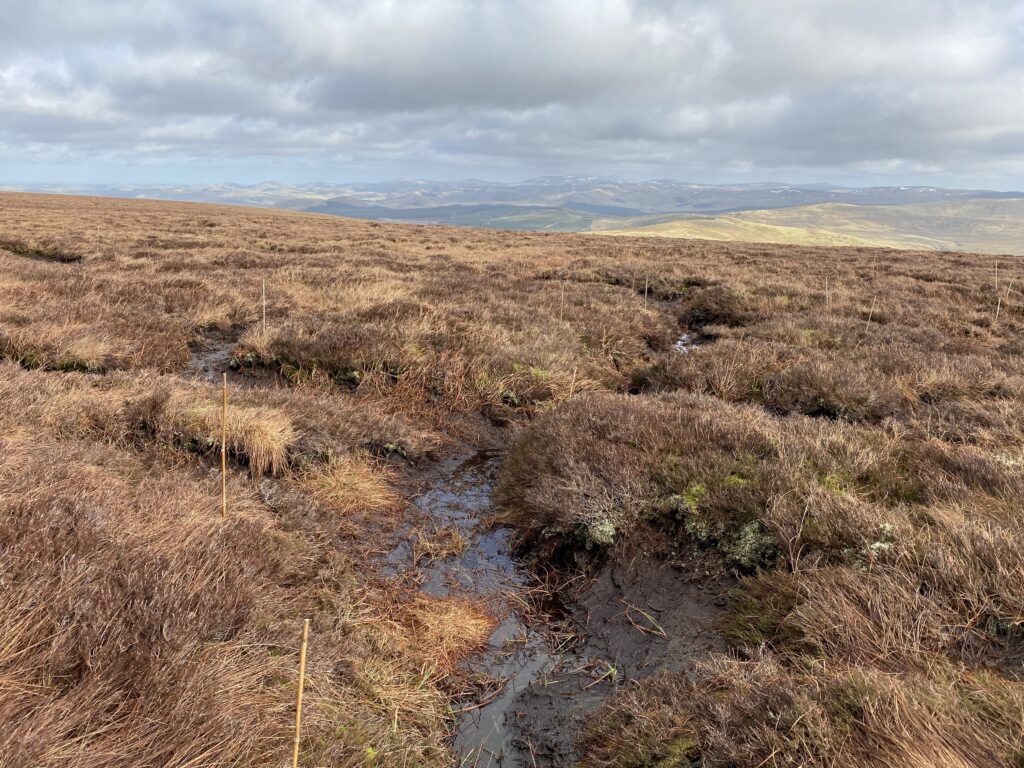
Healthy bogs also filter water through the peat and soak up rainwater to reduce flood risk. Our peat restoration work within Redesdale is clearly hugely important. With our partners at Northumberland Wildlife Trust we are working to improve the quality of the valley’s peatland for the benefit of all, through ecosystem services and providing vital habitat for wildlife.
So how did we do it…?
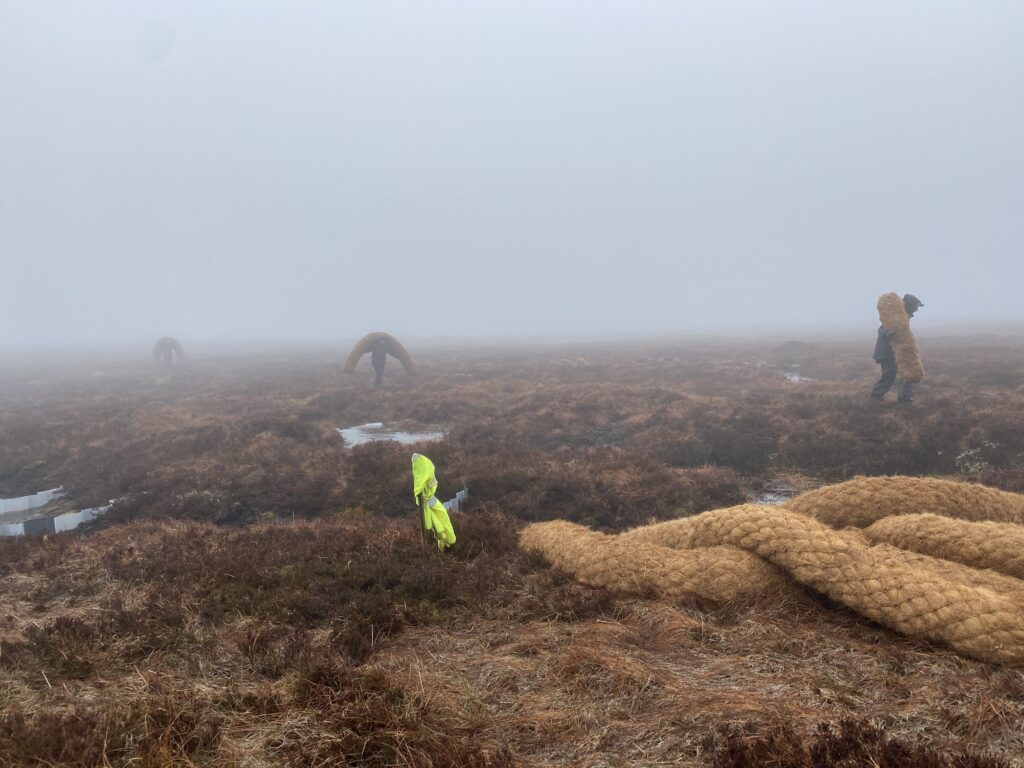
Peat restoration at Whitelee Moor NNR this year happened back in February/March. We carry out work in winter to minimise disturbance to birds that nest here during the spring. Pulling off huge projects like this on a site as remote as Whitelee, presents a multitude of challenges. We faced tight funding deadlines; a lack of helicopter availability to transport materials onto site; and of course everything winter weather throws at you 500m above sea level. With a great deal of planning, adaptability and a little tenacity we managed to complete the project with time to spare. The success was mostly down to the huge efforts from volunteers, staff and of course NWT’s trusty quadbike, ‘Quentin’.
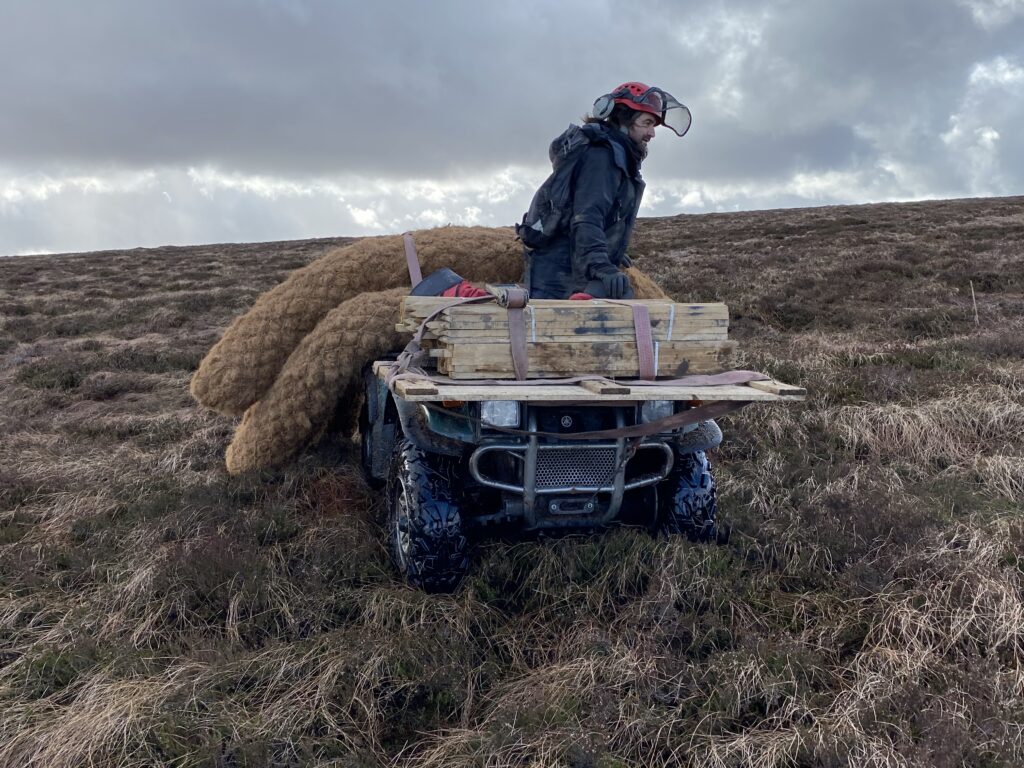
Here’s Geoff Dobbins, NWT’s Senior Estates Officer to explain more:
‘Time for an unsung hero of the Trust to step in, one of the longest serving members of the team, unloved and forgotten at the back of a barn. Who needs a helicopter when you can sprout coir wings, it’s time for ‘Quentin Vroom’ to save the day. We managed to complete the installation of over 700 coir dams and sphagnum planting well within the deadline – thanks to all the staff and volunteers who responded to the call to arms and braved the border ridge (sphagnum planting in February is not for the faint hearted, the sight of icicles hanging from Duncan Hoyle’s beard sums it up).’
Coir logs, long sausage shaped netting stuffed with coconut fibres, were used to dam eroded peat at the very top of Whitelee Moor. By installing small dams, runoff will be reduced (and therefore erosion), and instead, this creates pools of water which promotes sphagnum moss growth. Ultimately, this will aid peat production in the long term, as peat is created as sphagnum moss and other vegetation partially decomposes in waterlogged conditions. Peat only accumulates at an extremely slow rate (0.5 to 1mm each year!), making it incredibly important to preserve.
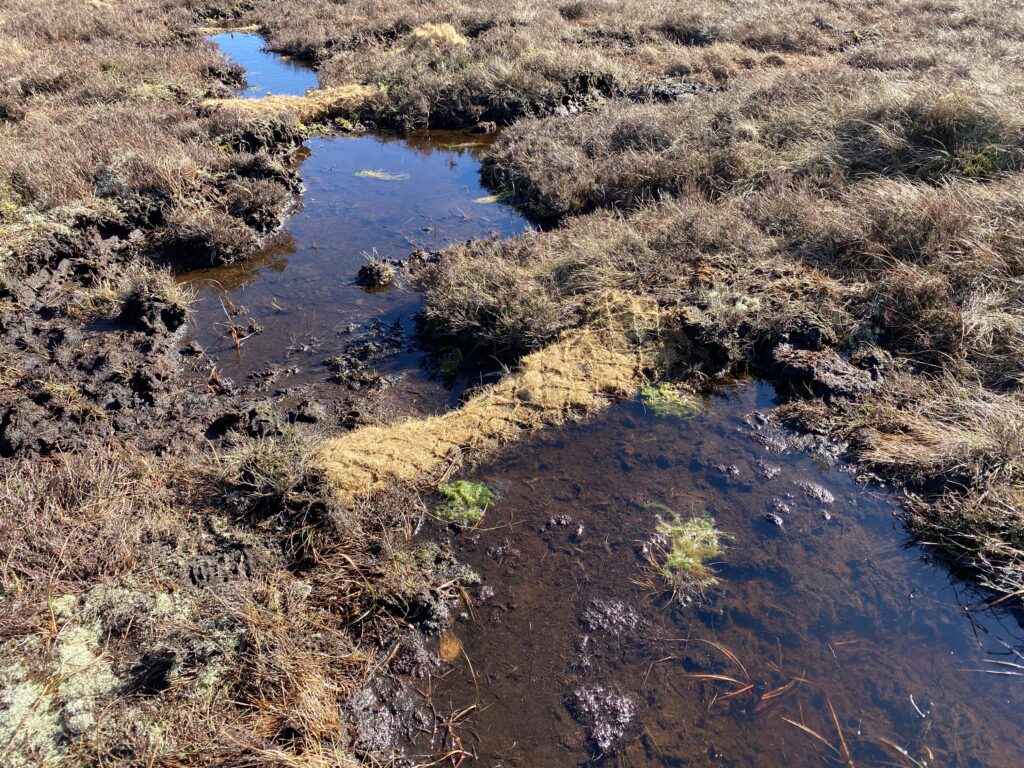
We also translocated sphagnum moss from areas at Whitelee Moor with successful moss growth, and planted the sphagnum in pools behind our installed coir logs. See the video below of how we harvested the sphagnum onsite.
Further work is planned up at Whitelee Moor in the coming winter season, so keep an eye out for updates.
All photo and video content credit to Natasha Hemsley.
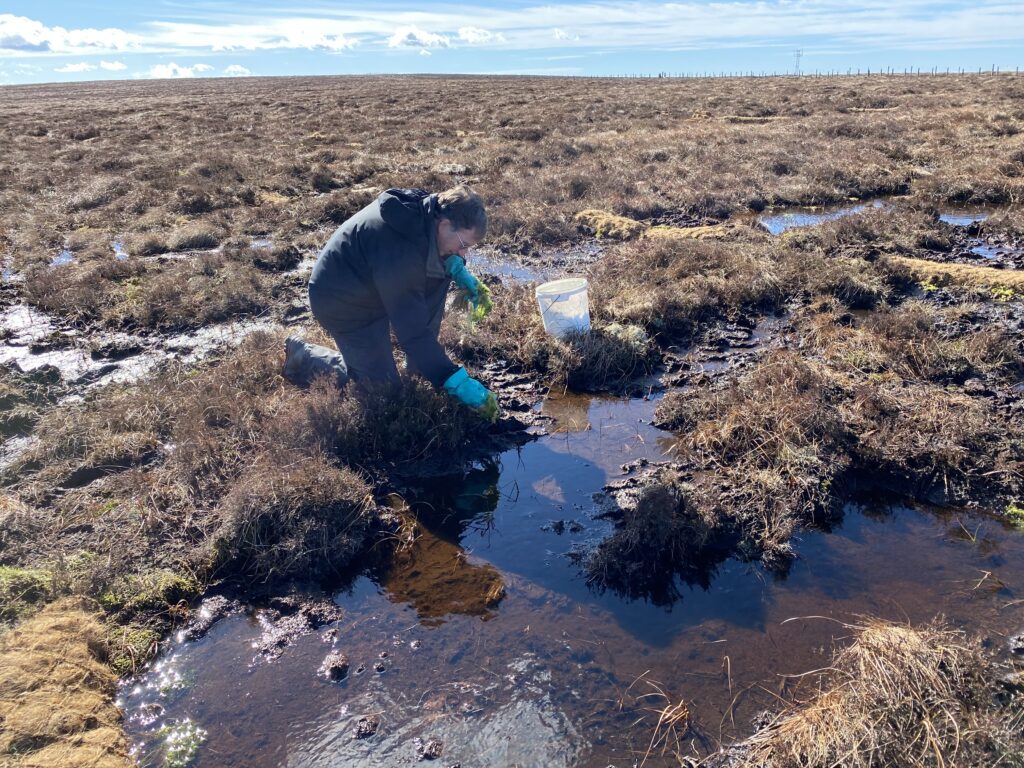
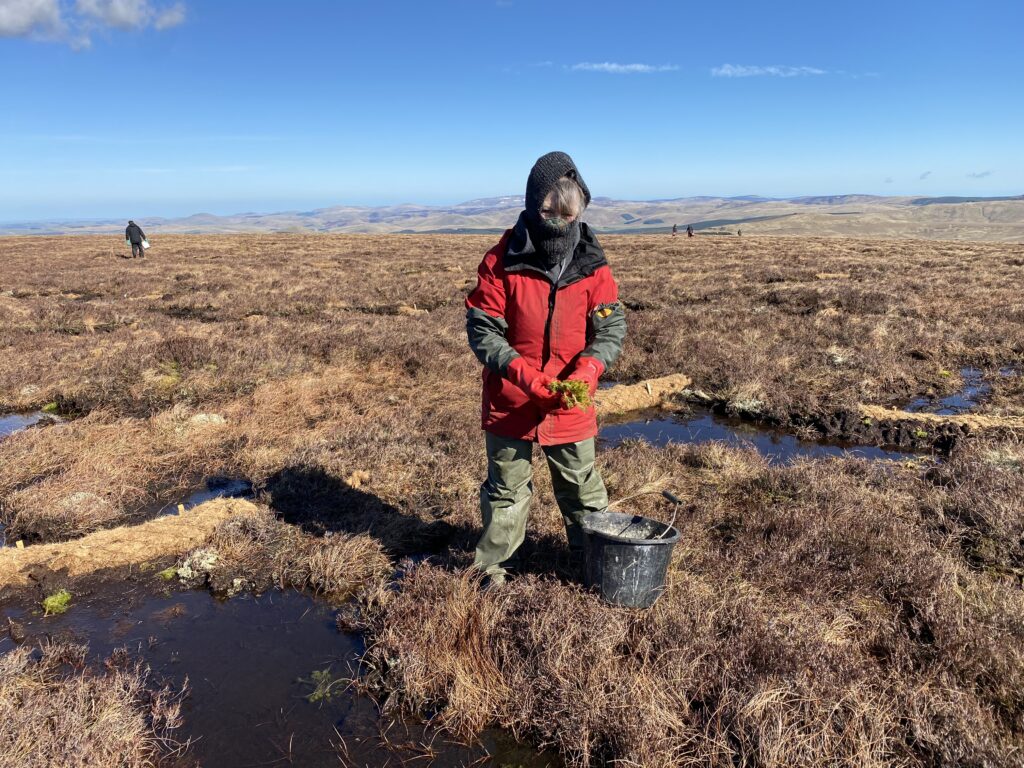
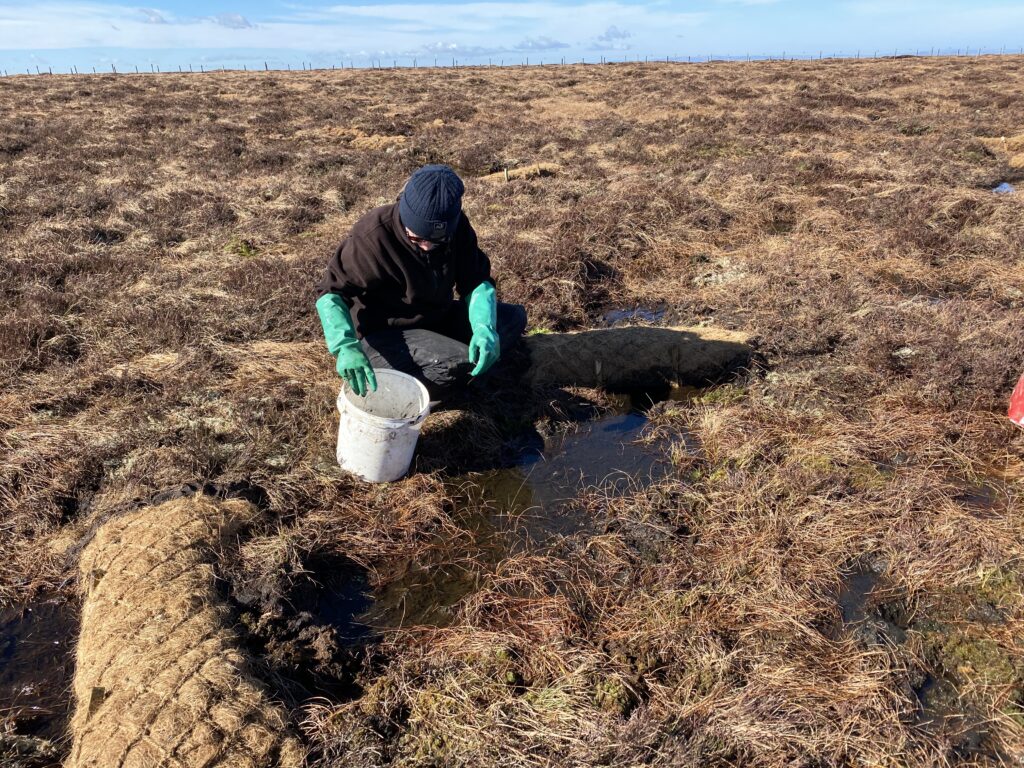
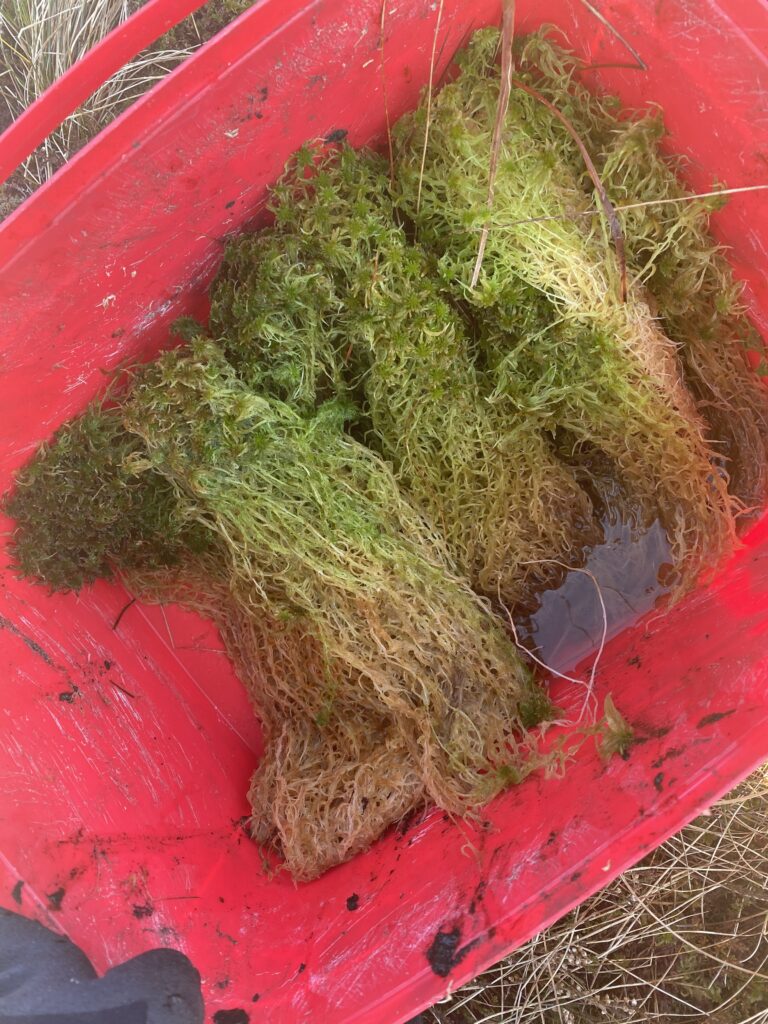
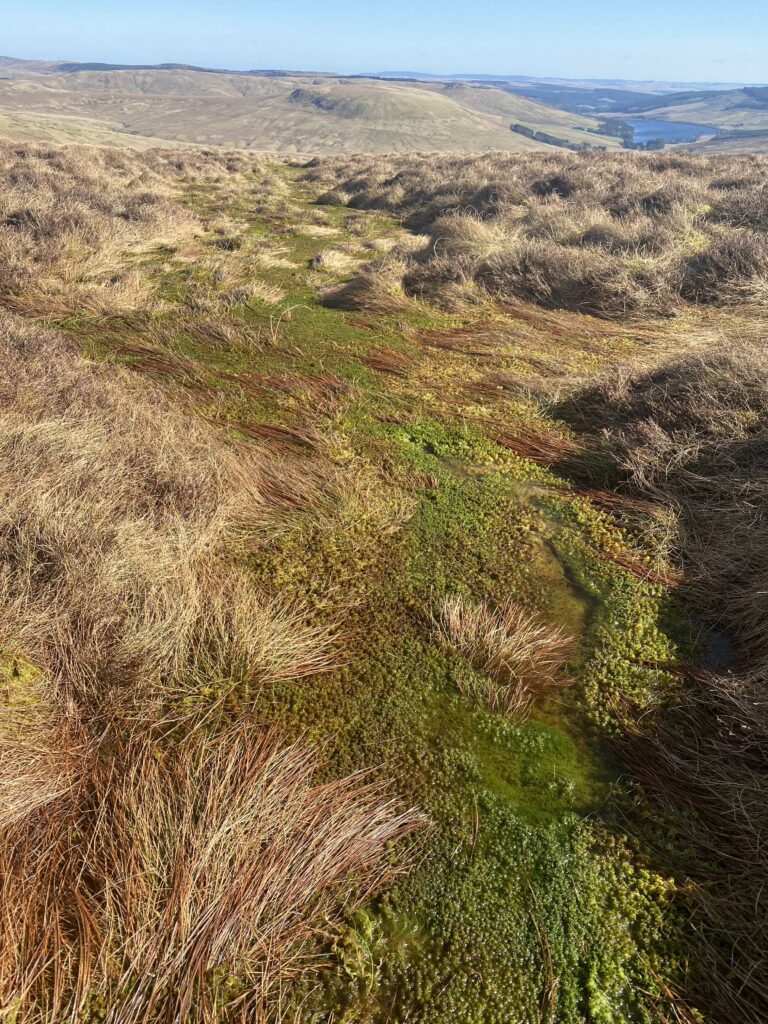
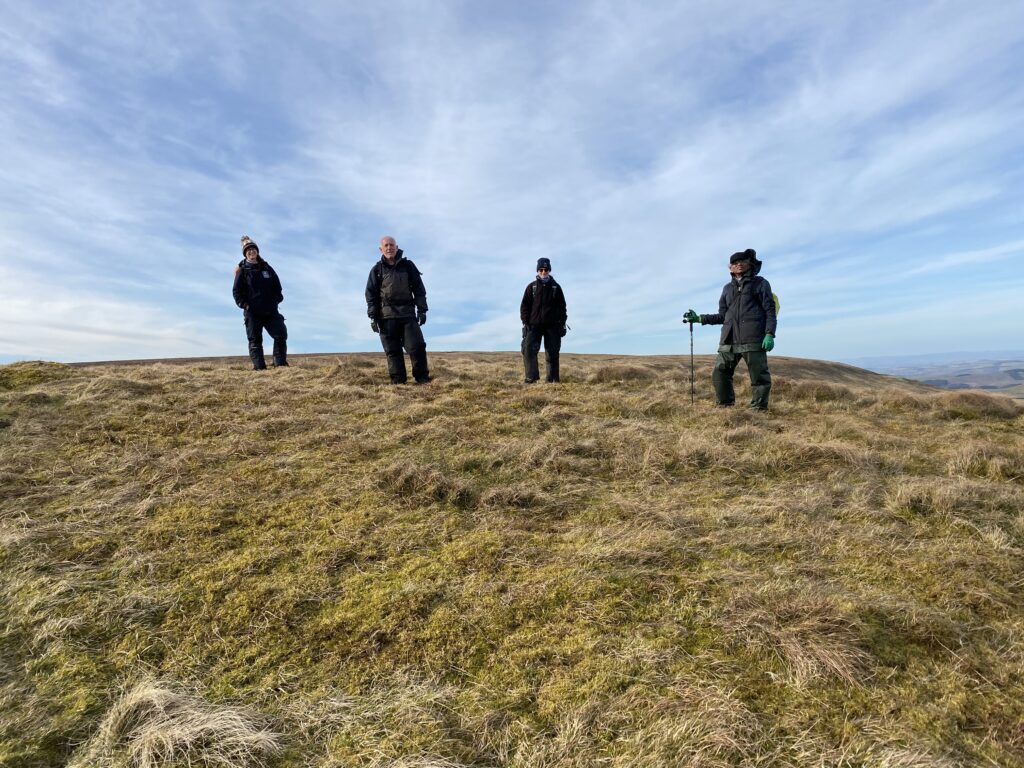
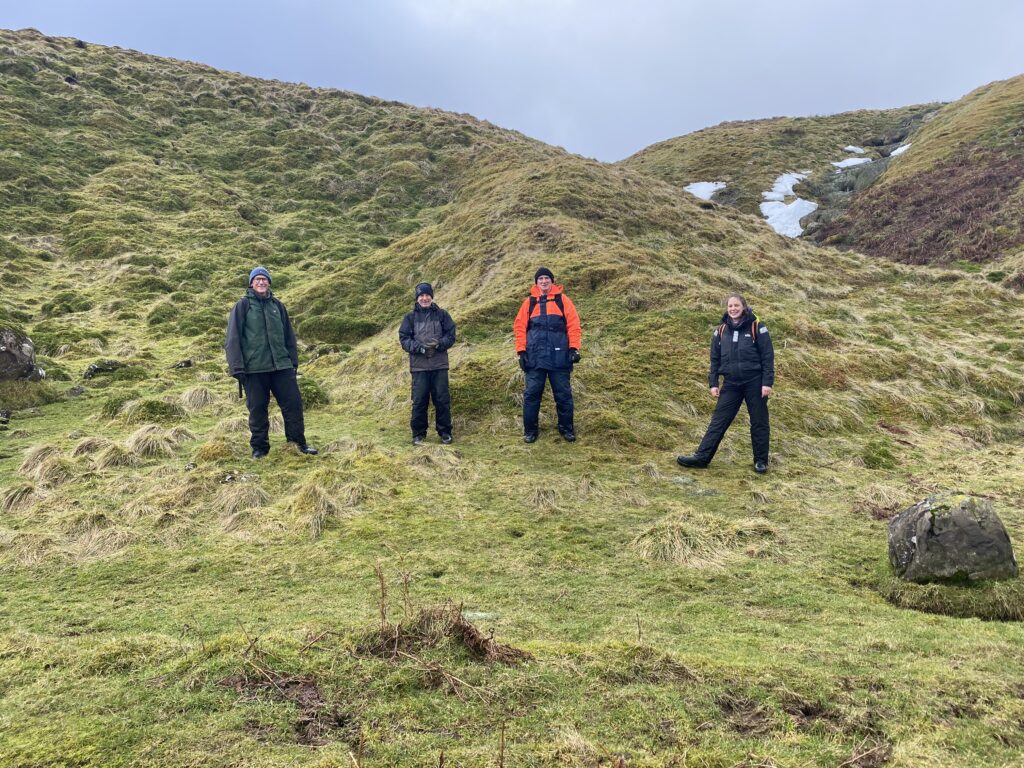
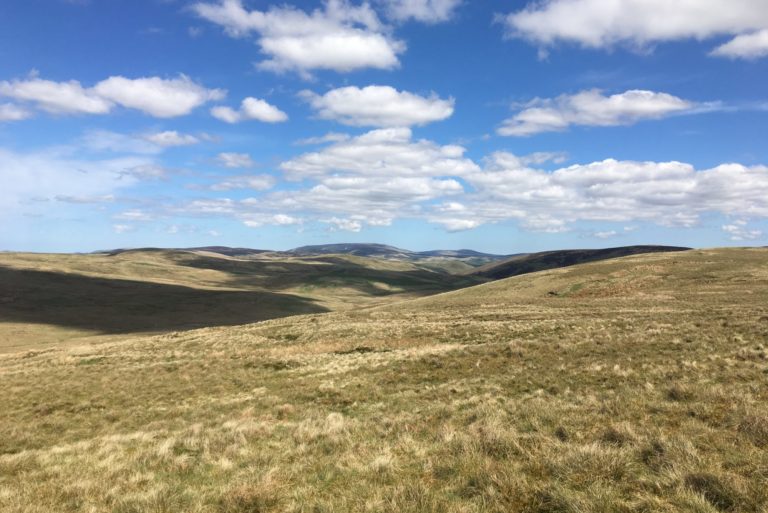
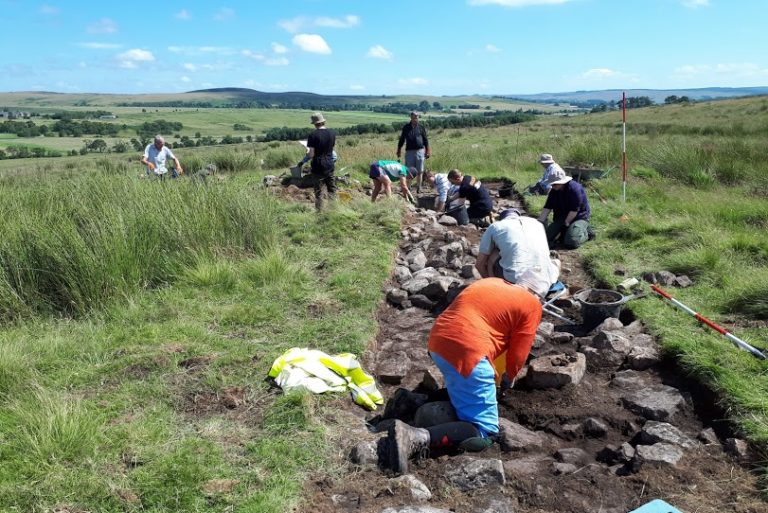
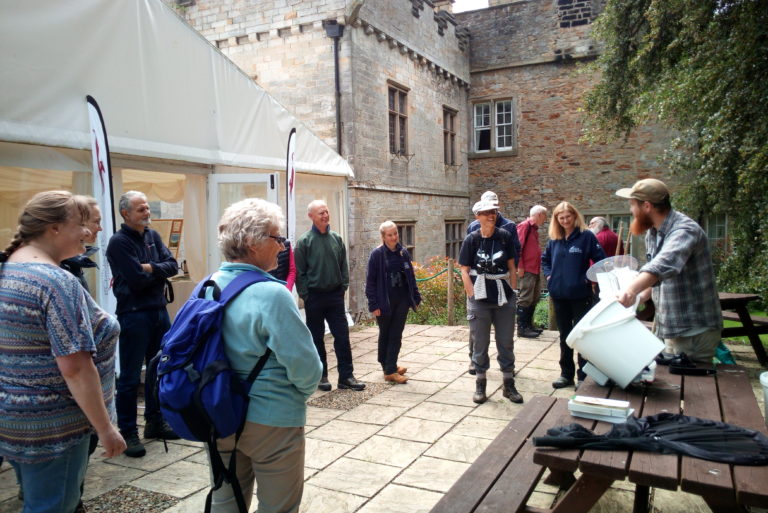
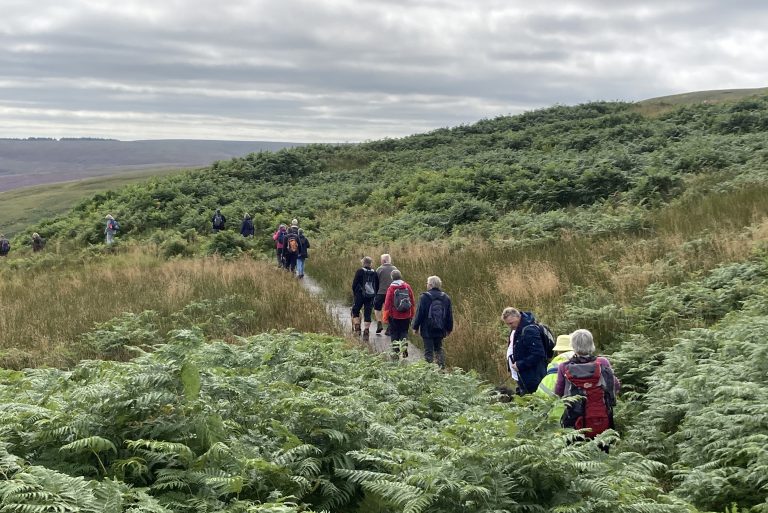
Leave a Reply